Carrying a concealed weapon is no doubt the best way to keep yourself safe as you carry out your day-to-day activities. In a dangerous confrontation, there’s no better way to make sure you come out on the other side alive.
Concealed carry isn’t without challenges though. Like anything, it takes practice to perfect, and many people are prone to making mistakes. As you know, there’s no room for error when you’re dealing with matters of life and death, and that’s why you owe it to yourself to make sure you do everything in your power to carry and discharge your firearm safely, accurately, and effectively.
Having said that, take a look at these common concealed carry missteps, and ask yourself if you’re guilty of them. If you are, start working to correct them immediately.
1. Touching and Checking Your Gun Too Much
What’s the point of concealing your firearm if you’re going to constantly touch it, adjust it, and make its presence obvious to everyone around you?
Dieter Heren on Survivaltacticalsystems.com elaborates:
“This is a bad habit often seen by those just starting to carry concealed. As they go about their routine, they’ll casually reach back and touch the gun with their fingers or sometimes blatantly just check to see if it’s still there. Don’t worry, if you’ve gotten a proper holster it’s still there. If you catch yourself doing this when you carry, suppress the urges and leave it alone! All you’re doing is giving people another chance to see that you have a gun on you. With a bit of experience and self control this urge will go away.”
2. Falling Out of Practice
The only way to guarantee that you’ll be able to discharge your weapon effectively when it matters most is to practice shooting regularly. Familiarity with your gun is crucial, and repetition of the fundamentals ensures you respond correctly in a crisis.
Ben Findley at Usacarry.com explains:
“Shooting fundamentals and skills are perishable and they deteriorate if not practiced. So, you must practice on a regular basis. Although dry-fire practice drills are useful, there is no substitute for live fire. You can run dry practice drills to practice presenting your handgun, aligning your sights, getting your firearm on target, exercising your trigger press and reset, and performing emergency reloads, tactical reloads, and malfunction clearances. However, dry-fire practice does not give you the experience of controlling your trigger and your firearm under recoil. If you cannot devote some time on a regular basis to shooting practice, your shooting skills and performance under the stress of a deadly-force encounter will suffer. Unfortunately, our deadly-force encounter shooting skills do not increase under the stress of pumping adrenaline. Our shooting skills and accuracy during a real-life encounter do not come close to our worse day of accurate shooting at the Range, but actually decrease. Your body is going to dump massive amounts of adrenaline into your bloodstream which will make you temporarily stronger and faster, but it adversely affects fine motor coordination such as your ability to focus on the front sight and press the trigger without disrupting the sight alignment. As a result, you will tend to be about half as good in a real encounter as you are on your best Range day. Regular practice definitely helps. Aim for a monthly Range shooting session, but try to go at least every 7 to 8 weeks at minimum. Certainly not once a year.”
3. Feeling Invincible
While training yourself and carrying your firearm regularly may significantly reduce your chances of harm, it can never eliminate them completely. It’s important to remember that you can still incur harm in a confrontation, and your gun isn’t a fix-all solution to potential violence.
Christina Vandivier at Wideopenspaces.com puts it perfectly:
“Carrying a concealed handgun is a huge responsibility and should not be taken lightly. Just because you now have a gun on your person does not mean that you have automatically eliminated any and all threats. You would avoid trouble if you were not armed and should avoid trouble even more so when you are.”
4. Carrying Too Many Different Guns
It takes time to master and hone your skills on each different type of gun. It’s not as if your skill will magically transfer perfectly to every gun you pick up. Each gun is different, and you can’t expect to be as quick, comfortable, or accurate if you’re carrying different guns every day.
Austin Davis at Kangaroo Carry explains why:
“Variety is the spice of life but is a recipe for disaster with firearms. There is only so much time and mental energy to train, so if you have to try to learn multiple operating ?systems/point of aim/point of impact on multiple handguns you will not have the maximum amount of muscle memory specific skill sets mastered to operate your handgun most effectively if at all under stress. If you need more than one dedicated carry firearm could you at least try to at least stay in the same gun family? If you prefer a certain type of firearm, get the other carry guns in the same configuration, operating system, and grip angle but perhaps in different sizes. For example, if you like an external safety make sure all your carry guns have a safety in same place that works in same direction. We lose the ability to think creatively under stress and will fall back on our lowest level of training. So same system/same way can save the day when time is life.”
5. Using a Cheap or Uncomfortable Holster
Your holster is a foundational part of your concealed carry setup. It allows you to access your gun quickly and safely, and it keeps it stored on your person comfortably. You shouldn’t be afraid to try lots of holsters and invest in a nice one when you find it.
Dan Zimmerman at The Truth About Guns tells us more:
“A holster that constantly chafes or needs adjustment isn’t only annoying, it can be dangerous. You’re much less likely to carry consistently if you know you’ll be uncomfortable doing so, and regular carry is a key to effective protection.
What’s more, people are more prone to adjust holsters that hurt them. Fiddling with your rig means handling your gun more often which can lead to an accidental discharge and drawing attention to your weapon. Both of which could ruin your day.
Carrying a firearm is never about intimidation factor or the prestige of owning expensive items. It’s about being being prepared to protect yourself and others in the event of a deadly threat. In a situation like that, there’s no room for error.”
Do you know of any other common concealed carry mistakes? Share this post with your thoughts or leave them in the comments.




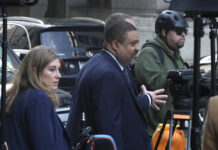


![Are Compensators Worth It? [Video]](https://preparedgunowners.com/wp-content/uploads/2025/07/Depositphotos_815431992_S-218x150.jpg)
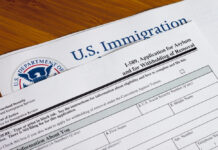


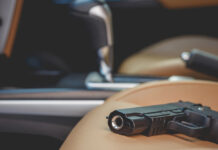
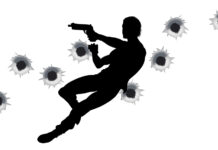

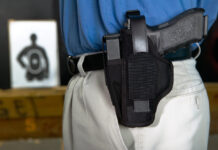
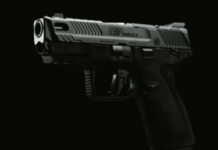
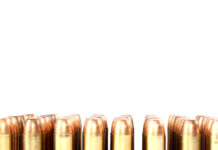
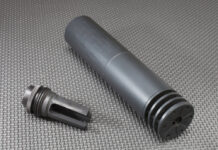
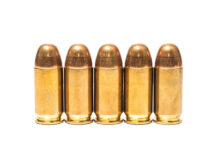
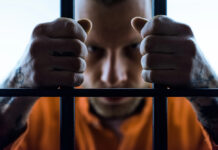











![Optic Ready vs Milled slides? [Video]](https://preparedgunowners.com/wp-content/uploads/2024/02/image-3-100x70.png)
![[Checklist] What Gear You Need To Take Pistol, Rifle & Shotgun Training Courses [Video]](https://preparedgunowners.com/wp-content/uploads/2023/07/Depositphotos_275087632_L-100x70.jpg)
![What is in Carter’s 2023 EDC? [Video]](https://preparedgunowners.com/wp-content/uploads/2023/07/Depositphotos_146856137_L-100x70.jpg)



Still carry an old Colt Cobra. It’s the best 6 shot snub-nose revolver ever made. It has that extra shot the small S&W snub nose does not. I don’t like the light weight’s. Have been carrying this old colt since the late 50’s. Cleaned and oiled once every other month. Chuck L.
chuck, I agree the revolver can be a good choose for many. However, you need to check out the Taurus 617SS2 Revolver | .357 Magnum 7 Round Matte Stainless. As a gunsmith and dealer, I will tell you this revolvers, coming in at 28oz, is soundly made, plus an additional round over your Colt. Try it, you will like it.
I do not believe a permit is needed ,nothing in 2nd amendment gives government authority?? Someone disagree ??Show documentation ,proof ?
I like to go to the range about once a month , but I also go to a training course were it is a laser shooting range ,with actual situations .Like Bank robbery ,gas station robbery ,Car jacking , Kidnaping , Zombie Hotel ,and just basic targets . It is real life ,and good training when to shoot and not to shoot . You should always be aware of your surrounding . You should always be prepared .
Walking around with a Rambo attitude will ring others’ warning bells. Stay quiet and humble, and no one will know you’re protected by your pistol or revolver.
Nothing says “I’m a big shot” worse than a big shot attitude which might even provoke a confrontation.
Pardon me if I believe your list is composed of minor mistakes. In all fairness, most of the lists I see are similar to yours.
Serious Mistakes that gunowners make are things like:
Shooting yourself
Shooting someone you shouldn’t have, either intentionally or unintentionally
Getting needlessly arrested
Getting shot by police officers responding to a call for help
Leaving guns where unauthorized persons can access them, resulting in tragedies
Frightening innocent people around you
Endangering innocent people needlessly
My list of incidents for the above Serious Mistakes for the past two years is 19 pages long, single spaced. My research effort wasn’t too deep, either. Mostly just stories that people linked for me or that Google Alerts sent me. It’s a bigger problem than anyone realizes.
Mr. Warner,
Good to have your input here!
And yes, yours are very much BIG mistakes that gun owners make 🙂
Comments are closed.